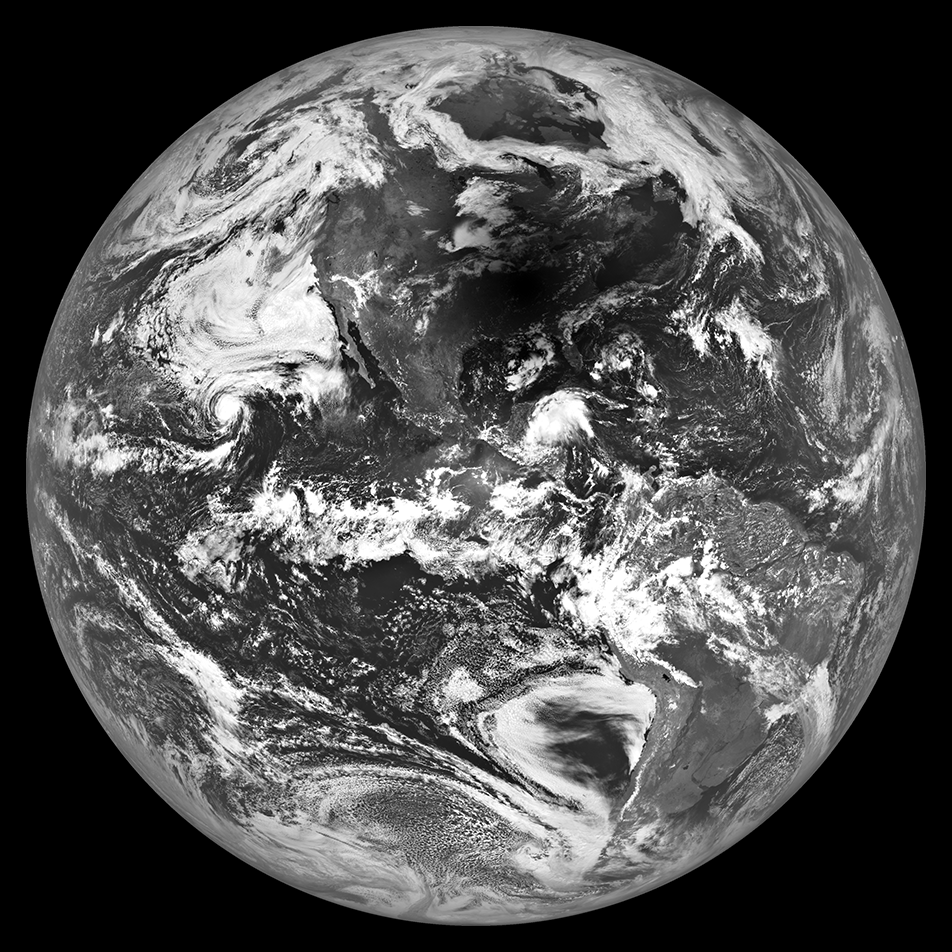
As LRO crossed the lunar south pole heading north at 1600 meters per second (3579 mph), the shadow of the Moon was racing across the United States at 670 meters per second (1500 mph). A few minutes later, LRO began a slow 180° turn to look back at the Earth and capture an image of the eclipse very near the location of maximum length of totality. The LROC NAC began scanning the Earth at 18:25:30 UTC and completed the image 18 seconds later (UTC is 4 hours ahead of Eastern Daylight Time, or 7 hours ahead of Pacific Daylight Time).
The NAC builds up an image line-by-line rather than the more typical "instantaneous" framing camera (i.e. your cell phone camera). Each line of the image is exposed for 0.338 milliseconds, and since the camera acquires 52224 lines, the total time to acquire the image is about 18 seconds. The line exposure time was set at the lowest possible value to prevent bright clouds from saturating the CCD (charge coupled device) sensor.

Due to the short line time (exposure), the raw image is very distorted in the down-track dimension (left-to-right in the figure above). You can think of each line overlapping quite a bit, so correcting the image geometry is simply a matter of averaging pixels in the line direction, which has the side benefit of increasing the signal-to-noise ratio (SNR) of the image.
The LROC NAC was designed with a very large dynamic range because the Moon is a very contrasty target (bright materials next to dark materials). Most digital cameras record 255 levels of gray while the NAC can record 3600 gray levels. When you look at the LROC images posted on the web those 3600 levels of gray were squeezed into 255 levels because that is all your screen is capable of displaying. As a result the brightest clouds appear to all have the same value (255) and its hard to tell the difference between the Atlantic Ocean and partially shadowed land (subtle brightness variations are lost). These subtle varitions are important for scientific studies but do not diminish the aesthetic appeal of the reduced images!
The animation shows how by adjusting the 0 to 3600 values into 0 to 255 values it is possible to use the camera's dynamic range to bring out subtle differences, and show the edge of the total eclipse, the umbra, where the Moon fully blocks the Sun and the penumbra, where part of the Sun peaks over the edge of the Moon.
While all of Monday’s thrill was in experiencing the shadow of the Moon sweep across us on Earth, on the Moon this was just another typical day. The lunar nearside was one week into its two-week night, while the Sun shone on the farside in the middle of its two-week day. For the Moon, and the LRO spacecraft observing the Moon, the real excitement is during a lunar eclipse, when the shadow of the Earth sweeps across the Moon. During this time the lunar surface temperatures drop rapidly and LRO’s thermal imager, the Diviner Lunar Radiometer, can learn about the material properties of the rocks and soils by studying their temperature just after the lights abruptly go out. Though for the LRO spacecraft itself, the Earth’s shadow means that most of the other instruments must be powered down because of the lack of power coming from the solar panels.
Full resolution eclipse image with labels
Full resolution eclipse image without labels
Related Featured Images:
Published by Mark Robinson on 29 August 2017